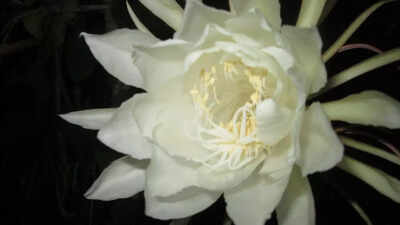The Brahma Kamal (Saussurea obvallata) is a rare flowering plant valued in Indian culture for its spiritual, medicinal, and decorative qualities. Native to the Himalayan region and named after Lord Brahma, it is considered a symbol of purity, prosperity, and divine energy. The plant is often used in traditional medicine and is also believed to enhance positivity when placed according to Vastu principles. Its unique appearance and night-blooming habit make it a distinctive addition to any space. This guide covers the plant’s significance, ideal direction-wise placement, and essential care tips to help it grow well indoors or in a garden.
Direction-wise placement of Brahma Kamal to attract positive energy and harmony at home
Brahmasthan (centre of the home)
Placing the Brahma Kamal at the centre of your home, also known as the Brahmasthan, is believed to purify the space energetically. According to Vastu Shastra, this area is the heart of the house where all energies converge. When the Brahma Kamal is placed here, it helps neutralise negative influences, attract divine blessings, and promote spiritual harmony. This placement is ideal for enhancing peace, balance, and overall well-being in the household.
Northeast direction (Ishan Kona)
The northeast is considered the most auspicious direction in Vastu, often linked to spiritual growth and divine energy. Placing the Brahma Kamal in this corner can amplify positive vibrations, improve focus during meditation or prayer, and support mental clarity. This placement is especially powerful if you have a puja or meditation room in your home. It is said to draw in wisdom, serenity, and cosmic blessings from the universe.
East direction
The east direction is associated with new beginnings, sunlight, vitality, and personal growth. When the Brahma Kamal is placed here, it is believed to encourage creativity, optimism, and good health. It also supports progress in education and career. The plant absorbs the gentle morning sunlight from this direction, which enhances its natural energy and symbolism. This placement is especially beneficial for those starting new ventures or seeking fresh motivation.
North direction
In Vastu, the north is connected with wealth, clarity, and career success. Positioning the Brahma Kamal in this direction is said to enhance financial stability and help in making clear, confident decisions. It also encourages steady professional growth and abundance. This placement is ideal for working professionals, students, or entrepreneurs who wish to invite prosperity and sharpen their focus
5 Best Brahma Kamal plant care tips
Caring for the sacred Brahma Kamal plant involves more than routine watering; it requires attention to light, temperature, and the right soil conditions. Here’s a detailed guide to help your Brahma Kamal thrive:
Sunlight
Brahma Kamal prefers indirect yet consistent sunlight. Place it in a well-lit area, such as near a window that gets filtered light throughout the day. Harsh direct sun can scorch its fleshy leaves, so it’s best to shield the plant from intense afternoon rays. If growing outdoors, choose a semi-shaded spot.
Watering
As a succulent, Brahma Kamal stores moisture in its leaves and does not require frequent watering. Water the plant only when the top inch of the soil feels dry to the touch. Overwatering can lead to root rot, so always check the soil moisture first. When watering, make sure to pour water directly into the soil and avoid wetting the leaves, which can invite fungal issues.
Temperature
This plant thrives best in moderate climates, with an ideal temperature range of 25°C to 35°C. It is sensitive to extreme weather, so protect it from direct exposure to strong heat, frost, or cold winds. If temperatures drop significantly, consider bringing the plant indoors.
Soil and potting
Use a well-draining soil mix, ideally containing garden soil, coarse sand, and perlite or pumice to prevent water stagnation. Choose a container with at least 3 to 4 drainage holes to ensure excess water flows out freely. Repot the plant every two years or whenever it outgrows its container to support healthy root development and blooming.
Fertilising
During the blooming season, usually during the monsoon or early autumn, feed your Brahma Kamal with a phosphorus-rich fertiliser every 25 to 30 days. This supports bud formation and flower growth. Once flowering is over, stop fertilising and allow the plant to rest.Also Read: How to grow Karonda during monsoon: 6 Easy home gardening steps for Indian cranberry






